The Wessex Saker Light Strike Vehicle was a British Army light vehicle similar to a sandrail. They were produced in the late 1980s for the British Special Air Service.
Design was by Wessex and Devonport Management Limited. The frame was welded tube and power, to the rear wheels only, was from a Volkswagen 1.6 litre air-cooled petrol engine.
It was a two-man vehicle which could be armed with either a 7.62 mm GMPG or a 0.5 inch M2 machine gun.
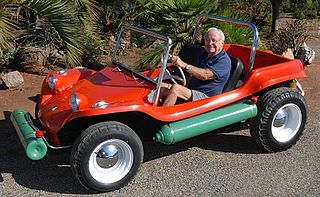
A dune buggy — also known as a beach buggy — is a recreational motor vehicle with large wheels, and wide tires, designed for use on sand dunes, beaches, roads or desert recreation.

The Royal Armoured Corps is the component of the British Army, that together with the Household Cavalry provides its armour capability, with vehicles such as the Challenger 2 Tank and the Scimitar Reconnaissance Vehicle. It includes most of the Army's armoured regiments, both the Royal Tank Regiment and those converted from old horse cavalry regiments. Today it comprises twelve regiments, eight regular and four reserve. Although the Household Cavalry Regiment provide an armoured regiment, they are not part of the RAC.

An attack aircraft, strike aircraft, or attack bomber is a tactical military aircraft that has a primary role of carrying out airstrikes with greater precision than bombers, and is prepared to encounter strong low-level air defenses while pressing the attack. This class of aircraft is designed mostly for close air support and naval air-to-surface missions, overlapping the tactical bomber mission. Designs dedicated to non-naval roles are often known as ground-attack aircraft.
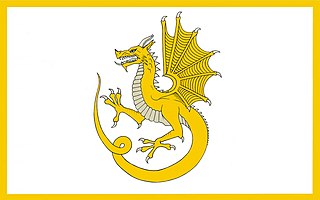
A wyvern is a legendary winged dragon that is bipedal and usually depicted with a tail ending in a diamond- or arrow-shaped tip.

The Westland Wessex is a British-built turbine-powered development of the Sikorsky H-34. It was developed and produced under licence by Westland Aircraft. One of the main changes from Sikorsky's H-34 was the replacement of the piston-engine powerplant with a turboshaft engine. Early models were powered by a single Napier Gazelle engine, while later builds used a pair of de Havilland Gnome engines.
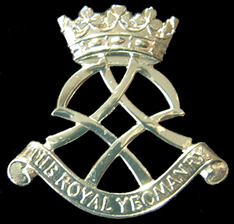
The Royal Yeomanry (RY) is the senior reserve light cavalry regiment of the British Army. Equipped with Supacat Jackal variants, their role is to conduct mounted and dismounted formation reconnaissance. The Regimental Headquarters is located in Leicester, with squadrons in Fulham, Nottingham, Dudley, Croydon, Telford, and Leicester. The regiment is part of the Royal Armoured Corps and is paired with and supports the 1st The Queen's Dragoon Guards (QDG). QDG and RY together form the light cavalry reconnaissance component of 7th Infantry Brigade, serving alongside six infantry battalions. The Royal Yeomanry is the only British Army Reserve unit to have been awarded a battle honour since the Second World War.

The King's Royal Hussars (KRH) is a Royal Armoured Corps regiment of the British Army formed in 1992. Based at Tidworth it serves as the armoured regiment of the 12th Armoured Infantry Brigade. Under Army 2020 Refine, it is intended to exchange its Challenger 2 tanks for Ajax vehicles.
The SS.12 and AS.12 are two variants of the same missile: SS for surface-to-surface and AS for air-to-surface. It was designed in 1955-1957 by Nord Aviation, later Aérospatiale. It was a derivative of the NORD SS-10 and SS-11 missiles which were surface-to-surface wire-guided missiles for use by infantry, vehicle or a helicopter primarily in the anti-tank role, but also anti-material, anti-personnel and against light field fortifications. The SS.12/AS.12 was basically a scaled-up version of the SS.11/AS.11, with a massive increase in range and warhead weight. The SS.12/AS.12 original mission was primarily to be anti-shipping from naval helicopters and combat aircraft or ground launchers, and secondarily for use against heavy field fortifications. The range and the destructive power of its warhead are roughly equivalent to a 127 mm (5-inch) artillery shell.

Operation Blackcock was an operation to clear German troops from the Roer Triangle, formed by the towns of Roermond and Sittard in the Netherlands and Heinsberg in Germany during the fighting on the Western Front in the Second World War. It was conducted by the British Second Army between 13 and 26 January 1945. The objective was to drive the German 15th Army back across the rivers Roer and Wurm and move the frontline further into Germany. The operation was carried out by Lieutenant-General Neil Ritchie's XII Corps by three divisions: the 7th Armoured Division, the 43rd (Wessex) Infantry Division and the 52nd (Lowland) Infantry Division. The operation, named after the Scottish black male grouse, is relatively unknown despite the sometimes fierce battles that were fought for each and every village and hamlet within the Roer Triangle.

Stagecoach West is the trading name of Cheltenham & Gloucester Omnibus Company Limited, a bus operator providing services in Gloucestershire, Bristol, Wiltshire, Oxfordshire, Northamptonshire, North Somerset and Herefordshire, in the West of England. The company is a subsidiary of Stagecoach Group.
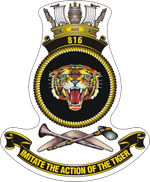
816 Squadron is a Royal Australian Navy Fleet Air Arm squadron that started out as a Royal Navy unit, 816 Naval Air Squadron.
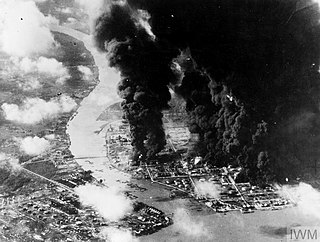
During World War II, Operation Meridian was part of a series of British air attacks directed at Japanese-held oil refineries on Sumatra. Meridian had two phases: Meridian One on 24 January 1945 and Meridian Two on 29 January. As a result, the critical aviation fuel output of the plants at Palembang was reduced by seventy-five percent.
32 Regiment Royal Artillery is a regiment in the Royal Artillery, part of the British Army and is equipped with the Lockheed Martin Desert Hawk III and PUMA 2 miniature unmanned aerial vehicles. 32nd Regiment is the only Royal Artillery unit that operates MUAS and along with the 5th Regiment Royal Artillery provides an integrated tactical and strategic; intelligence, surveillance, target acquisition, and reconnaissance (ISTAR) capability.
Under United Nations Security Council Resolution 678, a coalition of 35 countries, led by the United States, fought Iraq in the Gulf War from 1990–1991.
Army 2020 Refine was the name given to the restructuring of the British Army, in light of the Strategic Defence and Security Review 2015.

The Battle of Newry Road was a running gun battle between British Army helicopters and Provisional Irish Republican Army (IRA) armed trucks, fought along the lanes east of Crossmaglen, County Armagh, on 23 September 1993. The engagement began when an IRA motorized team from the South Armagh Brigade attempted to ambush three helicopters lifting off from the British Army base at Crossmaglen.
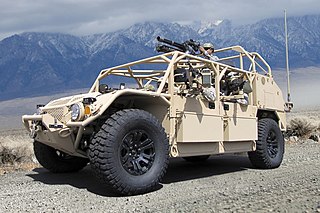
The Flyer Advanced Light Strike Vehicle platform has been developed by General Dynamics Ordnance and Tactical Systems (GD-OTS), in partnership with Flyer Defense LLC, for the U.S. Special Operations Command (SOCOM) Ground Mobility Vehicle Program. The Flyer Advanced Light Strike Vehicle platform configurations are the Flyer 72 and the narrower Flyer 60.

The organization of the British Army will be reorganized in 2022 with the Future Soldier reform. The British Army is commanded by the Chief of the General Staff with Army Headquarters is located in Andover, Hampshire. Subordinate to that post there is a Commander Field Army and a personnel and UK operations command, Home Command.
Defence in a Competitive Age is a Ministry of Defence command paper which was released on 22 March 2021. It provided details on changes to the armed forces to meet the requirements of the Integrated Review which was published before it on 16 March 2021.